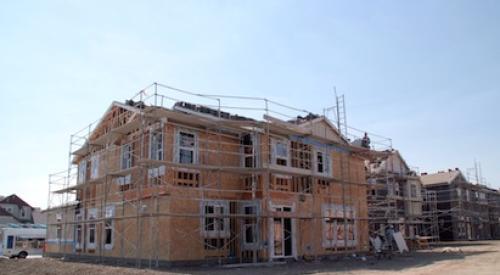This series of articles began with “Ten Questions to Ruin Your Year—Unless.” That initial piece detailed the seven critical cost categories that are rising faster than sales prices. With markets up almost everywhere, the result is greater sales with lower profit margins by percentage. In the articles that followed, we considered the “unless.” What specific actions can builders take to beat the problem of higher sales and lower profit margins, which will persist at least through 2016 and likely beyond? Now we arrive at the foundation that makes all the difference: the ability of a builder to master process.
The 12 processes that follow must be addressed by every builder, and they can be defined and arranged in myriad ways. You can break some of them down into sub-processes, and probably should in order to actually implement them, but this format keeps them organized on a high enough level that you’ll not get lost in the minutiae.
We will not repeat in each of these what should be obvious—you have to build and maintain your process with specific steps, gates, guidelines—all subject to the doctrine of continual improvement. You must be highly intentional because process happens and when it happens randomly on its own, it is at best sub-optimal and at worst a disaster.
As Brian Joiner, one of the great Deming Disciples, was known to say, “Things are the way they are, because they got that way.” OK, so deal with it. We start the change tomorrow.
1. Land/Lot Selection
Match land and lots to your strengths and market needs. Years ago I worked with a marketing genius named Steve who changed his firm’s entire approach to land selection. For years his company operated like most in the industry: It had intentions of finding “A” or “B” sites; considering schools, transportation, and local amenities that fit what the firm was good at building. A “C” site might work if it could hit the right price point.
Yet for virtually any piece of land that walked in the door with the right price and terms, out came the checkbook. With the deal in hand, it was now up to marketing, design, purchasing, and construction to figure out what to build to make it work. In those days, most of the profit made by builders was booked on the land. The house was just a mechanism to quickly turn the asset.
One benefit of the great crash of 2007–2013 was that builders once again had to figure out how to make money on the house itself.
So, determine your genuine strategic competencies for product needed by the market and learn to build that better than anyone else. Go find the land that fits what you do so well. Quit trying to force-fit bad land to your product, otherwise you’ll end up building great product on land that doesn’t work.
2. New Community Startup
Land contract through opening the first model. The process with perhaps the most obvious need that’s the most disregarded is the period between securing the land or lots and opening the first model. It is clearly more complicated for those who develop their own dirt, but even those buying finished lots miss essential steps. Builders call us asking if they can purchase a start-up template, and we’ve helped many design them, but all community start-up is local. Local terrain and soil can make or break a project, and all is complicated by federal, state, and home-grown zoning and environmental regulations that have as many versions as there are communities. This also assumes that you came out of Process No. 1 with land or lots that match what you build well and that fulfill a market need. That simplifies things for everyone. Yet, if like so many builders, you “made the deal,” got your price and terms, and now have to figure out what to build that will work, then product design, purchasing, marketing, and sales are all onboard for housing’s version of Mr. Toad’s Wild Ride. Why is this process so routinely neglected? Because it’s damn hard to work through the process and document it. But stop and think: You just discovered an ideal arena in which to develop a competitive advantage.
3. Product Design
Concept through fully detailed working drawings. We could bury this process in No. 2 above, yet it varies so much among builders that it needs to be mapped, analyzed, and developed on its own. Don’t get me wrong, product design should never operate in a vacuum with designers designing what they prefer to build or what they think is right. I have asked hundreds of conference participants if they have seen the negative results of that practice, and when I do, entire rooms erupt in a sea of groans and waving hands.
Presuming you picked the right general product category and size in the steps above, the trick now is getting it right. We run a week-long process called “LeanPlan Workout” using a coding system and a base of more than 800 questions in 20 labor and material categories, which cover every possible angle, to thoroughly analyze and spec a house on plan detail.
Suppliers and trades using a highly structured system like this produce an average of 75 specific plan improvements per model. Just imagine the impact on time, overhead, schedule, and profit if you nail down 90 percent of that prior to building the first model. Plan improvements mean fully detailed working drawings, including all mechanicals and engineering that benefits the builder first, not the concrete, lumber, or component suppliers. The sad truth is that most builders don’t want to pay for this level of plan detail because they don’t know how to count the costs of not having it.
4. House Bid Package
Include specifications, options, contracts, and scopes of work. You want to get a group of trades riled up? Ask how often they bid on something, then specs change to their detriment, yet they’re expected to hold their bid. The big problem here is that I’ve found not one purchasing department that gets the two things it needs to do the job—final plans and specifications, and the time required to develop complete bid packages with all details and scopes. The core issue here is management’s lack of discipline to decide on a product and stick with it. When senior management does do this, there’s always enough time. It has a profound and positive impact on the entire operation including suppliers and trades and their ability to build efficiently and make a profit while delivering top quality on schedule. No work should be started without a complete contract and a clear, mutually agreed-upon scope of work that’s part of every bid package. A clear definition of “job complete” is essential.
5. Sales and Marketing
Include options, selections, and design center (if applicable). I won’t try to sum up all the treatises written on ideal sales process, but I will emphasize what’s consistently missing: sales fulfillment. This includes everything that happens from the moment a new buyer is ready to sign until all options and colors are finalized, documented, and submitted to purchasing.
Virtually all sales training focuses on getting the deal. Fine, but a deal is not a deal without all of the above being 100 percent complete. Notice how some builds of the exact same house are far more profitable than others? Analyze the true total cost of how well these homes are spec’d out and contracted, and you learn what works and what doesn’t. Determine exactly what you offer and what you will not do, get agreements from all internal departments on requirements and cut-off dates, and then religiously manage customers accordingly. An astounding amount of time and labor waste can be traced to deficiencies in this process. Lost profit for both the builder as well as suppliers and trades is the result.
6. House Start Package
100 percent accurate, all details of exactly what goes into each house. Almost three decades ago I took Bill Pulte’s training class on purchasing and operations, which he personally conducted. The start package was a file of “JIOs”—job initiation orders—that covered every single thing that went into that house, with a highly detailed plan. Bill called it “The Bible,” a term he didn’t toss around lightly. Indeed, it was gospel. It contained all options, colors, and selections, the schedule, and the close date. Heaven help you if Bill showed up at your site in a city far away, took a look at your house Bible for Lot No. 54, and declared it less than holy.
This is another template people ask for, but it has to be developed locally using the parameters above. TrueNorth’s field guys will tell you—as will your suppliers and trades—that one look at a start package can predict how well everything on the house will go on just about every count.
7. Supplier and Trade Development
Secure and sustain top trades and crews at a competitive price. I’m not the only one who has written about this ad nauseam, yet I’m continually dismayed at how few builders take it seriously. A great deal of print and talk are wasted on good intentions, while genuine effort to build the best supplier and trade base with the best crews is rare. The only thing that matters here is total cost. Bid price outside of the understanding and use of the nine other critical factors of total cost is worse than meaningless because it will lead you astray. (See my June 2011 article, “10 Elements of the Total Cost Model.”) If you ask a group of builders to share horror stories of how they’ve been burned by low bids, you’d better bring provisions for a long siege. Inaccurate bids must be addressed with intense focus and a sustainable process that impacts every aspect of the business. Solve it and your sourcing problems will vanish.
8. PO/VPO Process
Accurate, efficient, responsive, with minimal variance. If I showed up at your office right now, could you show me both in dollar amount and in number of orders the percentage of your production built under VPO (variance purchase order) versus PO (purchase order)? You may call VPOs by other names such as EPO (exception purchase order) or FPO (field purchase order), but know this: Every single one represents loss.
There are many definitions and ways to measure the impact of VPOs, but we’re talking about any work done outside of the original start package. There are various explanations, such as site damage and winter conditions, but most involve specifications, custom options, missed selections, and late change orders. Strong builders control them—an effort that involves sales, marketing, and design as much as it does purchasing and construction. Establish your tracking method with some logic, stick with it, and watch it monthly. You’ll find innumerable opportunities to reduce cost. When you see those percentages come down, everything gets better.
9. Building Schedule
Accurate and predictable for suppliers, trades, and customers. As I’ve written many times: The best builders are the best schedulers, and the best schedulers are the best builders. Period. Working with nearly 200 builders of all types and sizes in five countries, I’ve never seen an exception to this. If you still schedule by cell phone, you’re ripping up money—for you, your suppliers, and your trades. Yes, it’s more difficult to schedule in the era of trade shortages and confusion in the markets, but do you sense another opportunity coming on here? Most of your competitors won’t make the effort to establish everything that goes with a great schedule, train their people, and continually work it. (One caution: Make sure your people understand how to schedule manually before you give them complicated software. Never automate a bad system.) The fact that it’s difficult makes it even more compelling. There’s no better way to ensure your source of trades than to be the best scheduler in your market.
10. Field Construction and Quality
Include site management, material management, QA, and warranty. During my first years in home building, this was all I worked on. In my job with a top 10 builder that had 15 divisions—quickly growing to more than 30—I soon learned that the best were those who understood and managed quality as a process beginning with lot and product selection, through design, through purchasing of labor and materials, construction, then warranty. We built a strong trade base with loyal suppliers. We checked deliveries for accuracy and quality. We took the temperature and ran slump tests on concrete. We tracked the days it took to do everything. As many things as we did right, we truly had the good, the bad, and the genuinely ugly at that firm. The learning opportunity to watch all of those operations closely and help those who wanted to be the best cannot be overstated, and I’m grateful for that. Counting defects at punch walk is not quality. At that point, you’re way too late. Quality results from building the requirements into everything you do; understanding it as an ongoing process rather than a status to be achieved makes all the difference.
11. Homebuyer Management
From prospect to contract through warranty. Many of these processes have obvious and necessary overlap. The key is considering the entire journey through your process, starting with what potential buyers see in ads and driving through a site, their first meeting with a salesperson, experiencing the models, becoming a prospect, converting to a contract, going through selections, experiencing construction, closing, through the official warranty period, and even beyond (if you care about continued referrals, that is). Establish your touch points at each step. Who does what? What does the customer get at every stage? Who do they hear from? Where do they go to get questions answered? Establish your process where every single touch point is proactively managed. Otherwise, accept the alternative: running around each day with your organizational hair on fire trying to keep up while losing goodwill.
12. Culture/People Development
A great workplace with productive, engaged people. This one is difficult to apply metrics to; one of those I-know-it-when-I-see-it situations. Plus, there are so many ways to skin this cat. I can send you to 10 different builders who have achieved this and you will find significant differences in how they operate.
In this process, as in all the others, there’s a strong desire to simply cherry pick and skip the hard work of developing your own process, but that never works. Benchmarking can be helpful, but permit me one final Deming-ism: “You cannot copy, you must understand why.” What my colleagues and I can tell you is universal: All strong cultures have leadership that demands everyone contribute in a productive way and ensures that all are recognized. People want to have influence over the systems and processes that influence them. Don’t just allow them to, encourage it and support it. Ensure that development of people and culture is a defined process, not a series of random events.
If you are like most builders, you don’t see one or two process deficiencies in your current business model but four, five, six, or more. You can’t fix everything at once, and you may suppose that since nearly everything needs improvement, you can start anywhere. That would be a mistake. Give yourself an honest rating on each item listed here, using a simple scale: deficient, evolving, competent, or mastery. Then ask your team to do the same. Make it anonymous, put your scores up, and start the discussion. Where do you stand on each? Which ones do you spend sincere time and effort on now? That can be a real challenge if not a downright conundrum with 12 essential processes to consider, but next month we will help you with that.
If you want to get a head start, the one book that everyone in home building should have read years ago that most haven’t is The Goal by Eliyahu Goldratt. You may have heard of his theory of constraints. It’s time to apply it.













